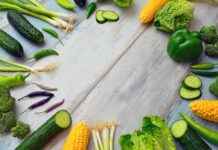Chia seed pudding has taken the health food world by storm, and for good reason. This versatile dish not only satisfies your sweet tooth but also packs a powerful nutritional punch. In this article, we will explore the many health benefits of chia seeds and provide you with creative recipes and tips to make delightful chia seed puddings that you can enjoy any time of the day.
Chia seeds are tiny, nutrient-dense seeds derived from the Salvia hispanica plant. They are rich in omega-3 fatty acids, fiber, and protein, making them an excellent addition to any diet. These seeds can help improve digestion, support heart health, and even aid in weight management due to their high fiber content that promotes satiety.
Making chia seed pudding is incredibly simple and requires minimal ingredients. To create a basic pudding, combine 1/4 cup of chia seeds with 1 cup of your choice of liquid (such as almond milk, coconut milk, or dairy milk) in a bowl. Stir well and let it sit for about 30 minutes or overnight in the refrigerator. This allows the seeds to absorb the liquid and form a gel-like consistency.
Understanding the key ingredients is crucial for a successful chia seed pudding. Here are the essentials:
- Chia Seeds: The star ingredient that provides texture and nutrition.
- Liquid: Choose from milk alternatives or fruit juices to enhance flavor.
- Sweeteners: Natural options like honey, maple syrup, or stevia can be used to add sweetness.
The liquid you choose can significantly affect the taste and texture of your pudding. Popular options include:
- Almond Milk: A nutty flavor that pairs well with fruits.
- Coconut Milk: Adds a creamy texture and tropical taste.
- Fruit Juices: For a refreshing twist, consider using orange or apple juice.
Additions like sweeteners and spices can elevate your chia seed pudding to new heights. Consider using:
- Cinnamon: A warm spice that complements the pudding beautifully.
- Vanilla Extract: Enhances the overall flavor profile.
- Fresh Fruits: Berries, bananas, or mangoes can add natural sweetness and vibrant colors.
Experimenting with flavors can make your chia seed pudding exciting. Here are some delicious combinations:
- Berry Blast: Mix in strawberries, blueberries, and raspberries.
- Chocolate Delight: Incorporate cocoa powder and top with nuts.
- Tropical Paradise: Add coconut flakes and pineapple for a refreshing treat.
Proper serving and storage are essential for maintaining freshness. Serve your chia seed pudding in clear jars or bowls to showcase its beautiful layers. For storage, keep it in an airtight container in the refrigerator, where it can last up to five days.
While chia seeds are generally safe, some individuals may have dietary restrictions or allergies. Always consult with a healthcare provider if you have concerns about incorporating chia seeds into your diet.
Common questions about chia seed pudding often arise. Here are some answers:
- How Long Does Chia Seed Pudding Last? It can be stored in the fridge for up to five days.
- Can You Eat Chia Seeds Raw? Yes, but soaking them is recommended for better digestion.

What Are Chia Seeds and Their Health Benefits?
Chia seeds, derived from the Salvia hispanica plant, have gained immense popularity in recent years due to their remarkable nutritional profile. These tiny seeds are not only versatile but also serve as a powerful addition to any diet. Packed with essential nutrients, chia seeds are a fantastic source of omega-3 fatty acids, fiber, and protein. In this section, we will explore the various health benefits of chia seeds and how they can significantly enhance your overall well-being.
Chia seeds are incredibly nutrient-dense, meaning they provide a high amount of nutrients with relatively few calories. Here are some key components that contribute to their health benefits:
- Omega-3 Fatty Acids: Chia seeds are one of the richest plant sources of omega-3 fatty acids, particularly alpha-linolenic acid (ALA). These healthy fats are essential for heart health, reducing inflammation, and supporting brain function.
- High Fiber Content: With about 11 grams of fiber per ounce, chia seeds can help promote digestive health, regulate blood sugar levels, and keep you feeling full longer, which aids in weight management.
- Protein Source: Chia seeds contain a good amount of protein, making them an excellent addition for vegetarians and vegans. They provide essential amino acids necessary for muscle repair and growth.
- Rich in Antioxidants: These seeds are loaded with antioxidants that help combat oxidative stress and protect your body from free radical damage.
Incorporating chia seeds into your diet is simple and can lead to numerous health benefits:
- Weight Management: The high fiber content in chia seeds can help you feel satiated, reducing overall calorie intake.
- Heart Health: Omega-3 fatty acids in chia seeds can lower cholesterol levels and reduce the risk of heart disease.
- Bone Health: Chia seeds are rich in calcium, magnesium, and phosphorus, all of which are vital for maintaining strong bones.
- Blood Sugar Regulation: The fiber in chia seeds slows down the absorption of sugar, helping to stabilize blood sugar levels.
While chia seeds are generally safe for most people, it’s essential to consume them in moderation. Some individuals may experience digestive issues if they consume large quantities without adequate hydration. Additionally, those with certain allergies should consult a healthcare provider before incorporating chia seeds into their diet.
In summary, chia seeds are a nutritional powerhouse that can significantly enhance your diet and overall health. With their rich profile of omega-3 fatty acids, fiber, and protein, they offer various benefits, from improved heart health to better digestive function. By incorporating chia seeds into your meals, you can enjoy a delicious and nutritious addition to your daily routine.
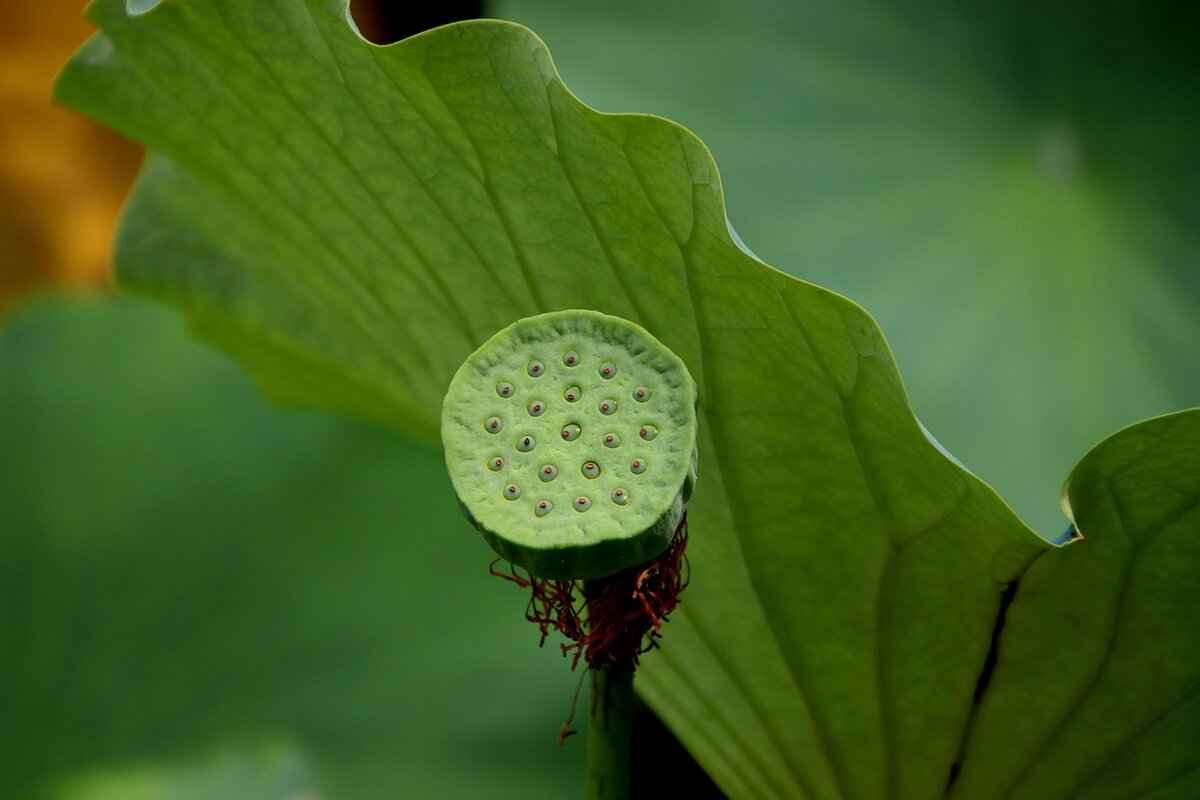
How to Make Basic Chia Seed Pudding?
Making chia seed pudding is a straightforward process that opens the door to a world of delicious and nutritious possibilities. With just a handful of ingredients, you can create a creamy base that serves as a perfect canvas for a variety of flavors. This guide will walk you through the essential steps to craft your own chia seed pudding.
Essential Ingredients for Chia Seed Pudding
- Chia Seeds: The star of the show, these tiny seeds swell and absorb liquid, creating a pudding-like texture.
- Liquid: Choose from milk (dairy or plant-based), yogurt, or even fruit juice to achieve the desired consistency.
- Sweetener: Natural sweeteners like honey, maple syrup, or agave nectar can enhance the flavor of your pudding.
- Flavorings: Vanilla extract, cocoa powder, or spices can add depth and complexity to your pudding.
Steps to Prepare Chia Seed Pudding
- Combine Ingredients: In a mixing bowl, combine 1/4 cup of chia seeds with 1 cup of your chosen liquid. Stir well to ensure there are no clumps of seeds.
- Add Sweetener: Mix in your preferred sweetener to taste. Start with a tablespoon and adjust according to your preference.
- Flavor It Up: Incorporate any additional flavorings you desire, such as a teaspoon of vanilla extract or a tablespoon of cocoa powder.
- Let It Rest: Cover the mixture and let it sit for at least 30 minutes in the refrigerator. This allows the chia seeds to absorb the liquid and expand, resulting in a thick pudding.
- Stir Again: After the resting period, give the pudding another good stir to break up any clumps and ensure a smooth consistency.
Choosing the Right Liquid for Your Pudding
The liquid you select plays a significant role in the flavor and texture of your chia seed pudding. Here are some popular options:
- Almond Milk: A nutty flavor that pairs well with sweeteners and fruits.
- Coconut Milk: Adds a rich creaminess and tropical flair, perfect for a dessert-like pudding.
- Oat Milk: A great choice for a creamy texture that complements various flavors.
- Fruit Juices: For a fruity twist, consider using orange juice or blended berries.
Tips for Achieving the Perfect Texture
To ensure your chia seed pudding has the ideal texture, consider the following tips:
- Use a ratio of 1:4 (chia seeds to liquid) for a thick pudding. Adjust the liquid amount for a thinner consistency.
- Allow the mixture to sit for at least 4 hours or overnight for best results.
- Experiment with blending the mixture for a smoother texture if you prefer.
By following these simple steps and tips, you can create a delightful chia seed pudding that is not only delicious but also packed with nutrients. Enjoy it as a breakfast option, a snack, or a dessert, and feel free to get creative with your favorite toppings and flavors!
Essential Ingredients for Chia Seed Pudding
When it comes to creating a delicious and nutritious chia seed pudding, understanding the key ingredients is crucial for achieving the perfect texture and flavor. Chia seeds themselves are the foundation of this dish, but the choice of liquid, sweeteners, and additional flavorings can elevate your pudding to new heights. In this section, we will explore the essential components that contribute to a successful chia seed pudding.
- Chia Seeds: These tiny seeds are packed with omega-3 fatty acids, fiber, and protein. They absorb liquid and expand, creating a gel-like consistency that is both satisfying and nutritious.
- Liquid: The type of liquid you choose is vital. Common options include:
- Almond Milk: A popular dairy-free alternative that adds a subtle nutty flavor.
- Coconut Milk: For a rich and creamy texture, coconut milk is a fantastic choice.
- Fruit Juice: Fresh juices like orange or apple can add natural sweetness and vibrant flavors.
- Sweeteners: While chia seeds have a mild flavor, adding sweeteners can enhance the taste. Consider:
- Maple Syrup: A natural sweetener that complements the nuttiness of chia seeds.
- Honey: Adds a floral sweetness, perfect for those who prefer a non-vegan option.
- Agave Nectar: A vegan-friendly sweetener that’s lower on the glycemic index.
- Flavor Enhancers: To make your pudding truly unique, you can incorporate various flavorings:
- Vanilla Extract: A few drops can add a warm, inviting aroma to your pudding.
- Cocoa Powder: For chocolate lovers, cocoa powder can transform your pudding into a decadent treat.
- Spices: Cinnamon or nutmeg can introduce a delightful warmth and complexity.
By understanding these essential ingredients, you can easily tailor your chia seed pudding to suit your taste preferences and dietary needs. The key is to experiment with different combinations until you find your perfect blend. Whether you prefer a fruity, chocolatey, or spiced pudding, the possibilities are endless!
In conclusion, the right mix of ingredients can make your chia seed pudding not only delicious but also a nutritious addition to your diet. With chia seeds as your base, explore various liquids, sweeteners, and flavor enhancers to create a pudding that satisfies your cravings while providing essential nutrients.
Choosing the Right Liquid for Your Pudding
When it comes to creating the perfect chia seed pudding, the liquid you choose plays a crucial role in determining the overall flavor and texture of the final dish. With a variety of options available, you can customize your pudding to suit your taste preferences and dietary needs. Below, we explore some of the best liquid choices, including milk alternatives and fruit juices, to help you make an informed decision.
The liquid serves as the base for your pudding, influencing not only the creaminess but also the nutritional profile. The right choice can enhance the flavor, provide essential nutrients, and create a delightful texture.
- Almond Milk: A popular dairy-free option, almond milk adds a subtle nutty flavor and is low in calories.
- Coconut Milk: Rich and creamy, coconut milk provides a tropical twist, making your pudding indulgent and delicious.
- Oat Milk: This option is naturally sweet and thick, perfect for achieving a smooth texture.
- Hemp Milk: Packed with omega-3 fatty acids, hemp milk offers a unique flavor and is a great choice for those seeking a nutrient boost.
- Fruit Juices: Juices like orange, apple, or berry can add natural sweetness and vibrant flavors to your pudding.
If you are lactose intolerant or following a vegan diet, milk alternatives are ideal. Almond milk and oat milk are particularly popular due to their creamy textures and pleasant flavors. Additionally, they are often fortified with vitamins and minerals, providing added health benefits.
Using fruit juice as a liquid can not only sweeten your pudding but also introduce a burst of flavor. For instance, orange juice can provide a refreshing citrus twist, while apple juice adds a mild sweetness. However, it’s essential to choose 100% fruit juice without added sugars to keep your pudding healthy.
Don’t hesitate to mix different liquids for a more complex flavor profile. For example, combining coconut milk with a splash of pineapple juice can create a tropical sensation. Experimenting with ratios can help you find your perfect blend.
The amount of liquid you use can significantly impact the consistency of your pudding. A general rule of thumb is to use a ratio of 3 tablespoons of chia seeds to 1 cup of liquid. If you prefer a thicker pudding, reduce the liquid slightly. Conversely, for a more runny texture, add a bit more liquid. Always allow the pudding to sit for at least 2 hours, or overnight, to achieve the desired thickness.
Ultimately, the choice of liquid for your chia seed pudding is a personal one, influenced by your taste preferences and dietary requirements. Whether you opt for creamy milk alternatives or sweet fruit juices, remember that the right liquid can enhance not only the taste but also the nutritional value of your pudding. With a bit of experimentation, you can create a delicious and satisfying treat that aligns perfectly with your lifestyle.
Sweeteners and Flavor Enhancers
Chia seed pudding is a delightful and nutritious treat that offers endless possibilities for customization. One of the easiest ways to enhance the flavor and enjoyment of this dish is by incorporating sweeteners and flavorings. By choosing the right additions, you can create a pudding that is not only delicious but also tailored to your personal taste preferences.
When it comes to sweetening your chia seed pudding, opting for natural sweeteners is a fantastic choice. Here are some popular options:
- Maple Syrup: This classic sweetener adds a rich, caramel-like flavor that pairs beautifully with chia seeds.
- Agave Nectar: A lower glycemic index sweetener, agave nectar is perfect for those looking for a lighter alternative.
- Honey: Nature’s sweetener not only adds sweetness but also brings a hint of floral notes to your pudding.
- Coconut Sugar: With its subtle caramel flavor, coconut sugar is an excellent choice for a more complex sweetening option.
In addition to sweeteners, incorporating spices can significantly elevate the flavor profile of your chia seed pudding. Here are some spices to consider:
- Cinnamon: This warm spice adds a comforting flavor and pairs well with many sweeteners.
- Vanilla Extract: A few drops of vanilla can enhance the overall taste and aroma of your pudding.
- Nutmeg: A pinch of nutmeg can add a unique depth of flavor, especially in autumn-inspired recipes.
- Cardamom: This exotic spice introduces a hint of warmth and complexity, making your pudding feel gourmet.
For a truly unique pudding, consider combining different sweeteners and spices. For example, mixing maple syrup with cinnamon creates a deliciously cozy flavor, while pairing agave nectar with cardamom can transport your taste buds to far-off lands.
Another effective way to enhance your chia seed pudding is by incorporating fruits and extracts. Fresh fruits like berries, bananas, and mangoes not only provide natural sweetness but also add vibrant colors and textures. You can also experiment with extracts such as almond or coconut to create a unique flavor profile.
Don’t hesitate to experiment with different combinations of sweeteners, spices, and flavorings. The beauty of chia seed pudding lies in its versatility. You can create a tropical version with coconut milk, mango, and lime zest, or a chocolate version using cocoa powder, honey, and vanilla extract. The possibilities are endless!
By thoughtfully selecting your sweeteners and flavor enhancers, you can transform a simple chia seed pudding into a delightful culinary experience. Enjoy the process of experimenting and discovering your perfect flavor combinations!
Tips for Achieving the Perfect Texture
When it comes to making chia seed pudding, the texture is crucial for achieving a delightful experience. The right consistency can transform a simple dish into a creamy, satisfying treat. Here are some essential tips to help you master the texture of your chia seed pudding and avoid common preparation pitfalls.
Chia seeds are renowned for their ability to absorb liquid and expand, creating a gel-like consistency. This property is what makes them perfect for puddings. When mixed with liquid, chia seeds can swell up to ten times their original size, resulting in a thick and creamy pudding. However, achieving the ideal texture requires careful attention to detail.
The most critical factor in achieving the perfect texture is the ratio of chia seeds to liquid. A common guideline is to use:
- 3 tablespoons of chia seeds for every 1 cup of liquid.
Using too few seeds can lead to a watery pudding, while too many seeds can make it overly thick and gelatinous. Experimenting with this ratio will help you find your preferred consistency.
After mixing your chia seeds and liquid, it’s essential to let the mixture sit. This allows the seeds to absorb the liquid and swell properly. A minimum of:
- 2 hours in the refrigerator is recommended.
- For best results, allow it to sit overnight.
This resting period not only enhances the texture but also allows the flavors to meld together beautifully.
While making chia seed pudding may seem straightforward, there are a few common mistakes to avoid:
- Not stirring enough: Ensure you stir the mixture thoroughly after combining the seeds and liquid. This helps prevent clumping and ensures an even texture.
- Using the wrong type of liquid: Different liquids can yield different textures. For instance, using thicker liquids like almond milk may result in a denser pudding, while coconut water can create a lighter texture.
- Ignoring the soaking time: Skipping the soaking time can lead to a grainy texture. Patience is key!
You can also enhance the texture of your chia seed pudding by adding ingredients like:
- Yogurt: Incorporating yogurt can create a creamier consistency.
- Nut butters: They add richness and a smooth texture.
- Fruit purees: These can not only add flavor but also contribute to a silkier mouthfeel.
Ultimately, achieving the perfect texture in chia seed pudding is a matter of personal preference. Don’t hesitate to experiment with different ratios, soaking times, and ingredient combinations to find what works best for you. Remember, the goal is to create a pudding that is not only delicious but also has a texture that you enjoy.
By following these tips and being mindful of the preparation process, you can create a chia seed pudding that is perfectly textured and enjoyable. Happy pudding making!
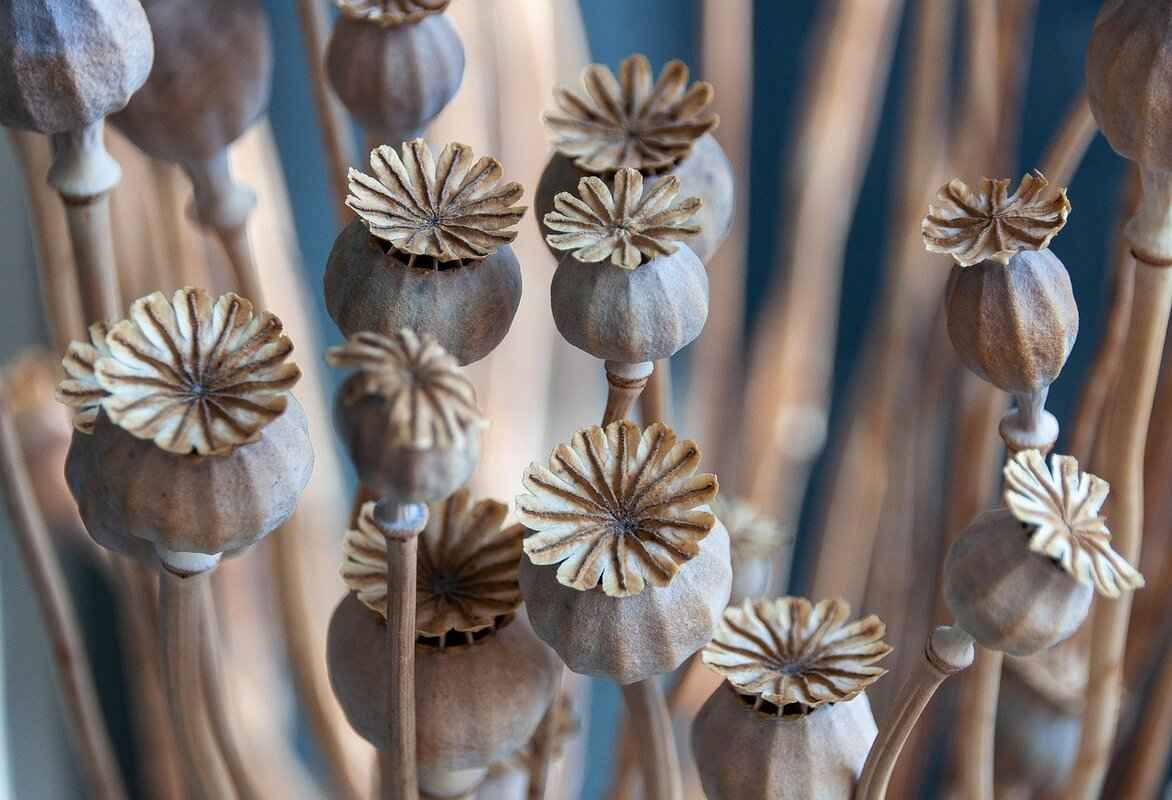
Creative Chia Seed Pudding Flavor Combinations
Chia seed pudding is not only a nutritious choice but also a canvas for creativity in the kitchen. Experimenting with flavors can make your chia seed pudding exciting and delicious. Here are some delightful combinations to inspire your next batch:
- Berry Bliss: Combine mixed berries such as strawberries, blueberries, and raspberries with almond milk. The natural sweetness of the berries will enhance the pudding’s flavor.
- Tropical Paradise: Use coconut milk as your base and add mango and pineapple for a refreshing tropical twist. Top with shredded coconut for added texture.
- Chocolate Delight: Mix cocoa powder with your choice of milk and sweeten with honey or maple syrup. Add some chopped nuts or dark chocolate chips for a rich, indulgent experience.
- Peanut Butter Banana: Blend creamy peanut butter into your base and top with sliced bananas. This combination offers a satisfying balance of protein and flavor.
- Matcha Green Tea: Whisk in matcha powder to your pudding base for a unique flavor and a boost of antioxidants. Sweeten to taste and consider adding a sprinkle of sesame seeds on top.
- Spiced Pumpkin: In the fall, try adding pumpkin puree and a mix of spices such as cinnamon and nutmeg. This comforting flavor combination is perfect for a seasonal treat.
- Citrus Burst: Incorporate orange or lemon zest into your pudding for a zesty kick. Pair it with vanilla extract for a refreshing flavor profile.
Each of these combinations not only enhances the flavor of your chia seed pudding but also adds a variety of nutrients. Chia seeds themselves are packed with omega-3 fatty acids, fiber, and protein, making them a powerhouse ingredient. By incorporating fruits, nut butters, or spices, you can tailor the pudding to meet your taste preferences and nutritional needs.
To prepare these flavor combinations, start with the basic recipe for chia seed pudding: mix chia seeds with your chosen liquid (like almond milk, coconut milk, or yogurt) and let it sit for a few hours or overnight. Once the pudding has thickened, stir in your flavor ingredients and toppings, and enjoy!
Don’t hesitate to experiment further by mixing and matching flavors or adding your own twist. The versatility of chia seed pudding means you can create a new favorite each time. With these creative flavor combinations, your chia seed pudding will never be boring again!
Fruit-Infused Chia Seed Pudding Ideas
When it comes to enhancing the flavor and nutrition of your chia seed pudding, fruits are a fantastic addition. They not only provide natural sweetness but also add vibrant colors that make your dessert visually appealing. Here, we will explore some popular fruit combinations that can elevate your chia seed pudding to a new level of deliciousness.
Fruits are rich in vitamins, minerals, and antioxidants, making them a perfect complement to the nutrient-dense chia seeds. By incorporating fruits, you can boost the nutritional value of your pudding while also creating an explosion of flavors. Here are some enticing combinations to consider:
- Berry Bliss: Combine strawberries, blueberries, and raspberries for a berry medley that is both sweet and tart. The antioxidants in berries can promote heart health and improve skin quality.
- Tropical Paradise: Mix mango, pineapple, and coconut for a tropical twist. This combination brings a refreshing taste that can transport you to a beach paradise.
- Citrus Burst: Adding orange and grapefruit segments can provide a zesty flavor to your pudding. The vitamin C in citrus fruits is great for boosting your immune system.
- Banana and Nut Delight: Sliced bananas paired with a drizzle of almond or peanut butter create a satisfying and nutrient-rich pudding that is perfect for breakfast or a snack.
- Apple Cinnamon Crunch: Diced apples mixed with a sprinkle of cinnamon offer a comforting flavor reminiscent of apple pie. This combo is great for fall and adds fiber to your diet.
To prepare your fruit-infused chia seed pudding, start with a basic chia pudding recipe. Combine chia seeds with your choice of liquid, such as almond milk or coconut milk, and let it sit for a few hours or overnight to thicken. Once your pudding has reached the desired consistency, gently fold in your chosen fruits. Here’s a simple method:
1. In a bowl, mix 1/4 cup of chia seeds with 1 cup of your preferred liquid.2. Stir well and let it sit for 5 minutes, then stir again to prevent clumping.3. Cover and refrigerate for at least 2 hours or overnight.4. Once thickened, add your favorite fruit combination and mix gently.5. Serve immediately or store in the fridge for up to 5 days.
When choosing fruits for your pudding, consider their ripeness and freshness. Fresh fruits not only taste better but also retain more nutrients. If you’re using frozen fruits, ensure they are unsweetened to keep your pudding healthy. Additionally, you can experiment with herbs and spices like mint or vanilla to enhance the flavor profile.
In summary, incorporating fruits into your chia seed pudding not only enhances its flavor but also boosts its nutritional content. With endless combinations to explore, you can enjoy a delicious and healthy dessert that caters to your taste preferences.
Chocolate and Nut Variations
Chia seed pudding is not just a healthy snack; it can also satisfy your cravings for something sweet. One of the most indulgent ways to enjoy chia pudding is by incorporating chocolate and nut flavors. This combination not only elevates the taste but also adds rich textures and nutritional benefits. Here, we explore some delightful recipes and ideas to create the perfect chocolate and nut-based chia puddings.
Chocolate and nuts are a match made in heaven. The richness of cocoa combined with the creamy texture of nut butters creates a decadent treat that feels indulgent yet is packed with nutrients. Chia seeds are high in omega-3 fatty acids, fiber, and protein, making this dessert not only delicious but also nutritious.
- Chia Seeds: The base of your pudding, providing a gel-like texture when soaked.
- Milk or Milk Alternatives: Almond milk, coconut milk, or oat milk work wonderfully.
- Cocoa Powder: Unsweetened cocoa powder for a rich chocolate flavor.
- Nut Butters: Almond butter, peanut butter, or hazelnut spread for creaminess.
- Sweeteners: Maple syrup, honey, or agave nectar to enhance sweetness.
- Toppings: Chopped nuts, shredded coconut, or cacao nibs for added crunch.
Making this pudding is simple and requires minimal effort. Here’s a quick recipe:
Ingredients:- 1/4 cup chia seeds- 1 cup milk or milk alternative- 2 tablespoons cocoa powder- 2 tablespoons nut butter- 1-2 tablespoons sweetener (to taste)Instructions:1. In a bowl, mix the chia seeds, cocoa powder, and sweetener.2. Add the milk and whisk until well combined.3. Stir in the nut butter until smooth.4. Let it sit for about 5-10 minutes, then stir again to prevent clumping.5. Cover and refrigerate for at least 2 hours or overnight.6. Serve chilled, topped with your favorite crunchy toppings.
There are countless ways to customize your chocolate and nut chia pudding. Here are some ideas:
- Nutty Banana Delight: Add mashed banana to the mixture for natural sweetness and flavor.
- Chocolate Hazelnut Dream: Use hazelnut spread instead of nut butter for a Nutella-inspired treat.
- Spicy Chocolate: Incorporate a pinch of cayenne pepper or cinnamon for a warm kick.
- Berry Nutty: Top with fresh berries for a burst of flavor and color.
Presentation can elevate your chia pudding experience. Serve in clear jars or bowls to showcase the beautiful layers. You can also create a parfait by alternating layers of chia pudding with yogurt and fruits.
To keep your pudding fresh, store it in an airtight container in the refrigerator. It can last up to five days, making it a perfect meal prep option. Just give it a good stir before serving, as it may thicken further over time.
With these chocolate and nut variations, chia seed pudding transforms into a delightful treat that satisfies your sweet tooth while keeping you healthy. Enjoy experimenting with flavors and textures to find your perfect combination!
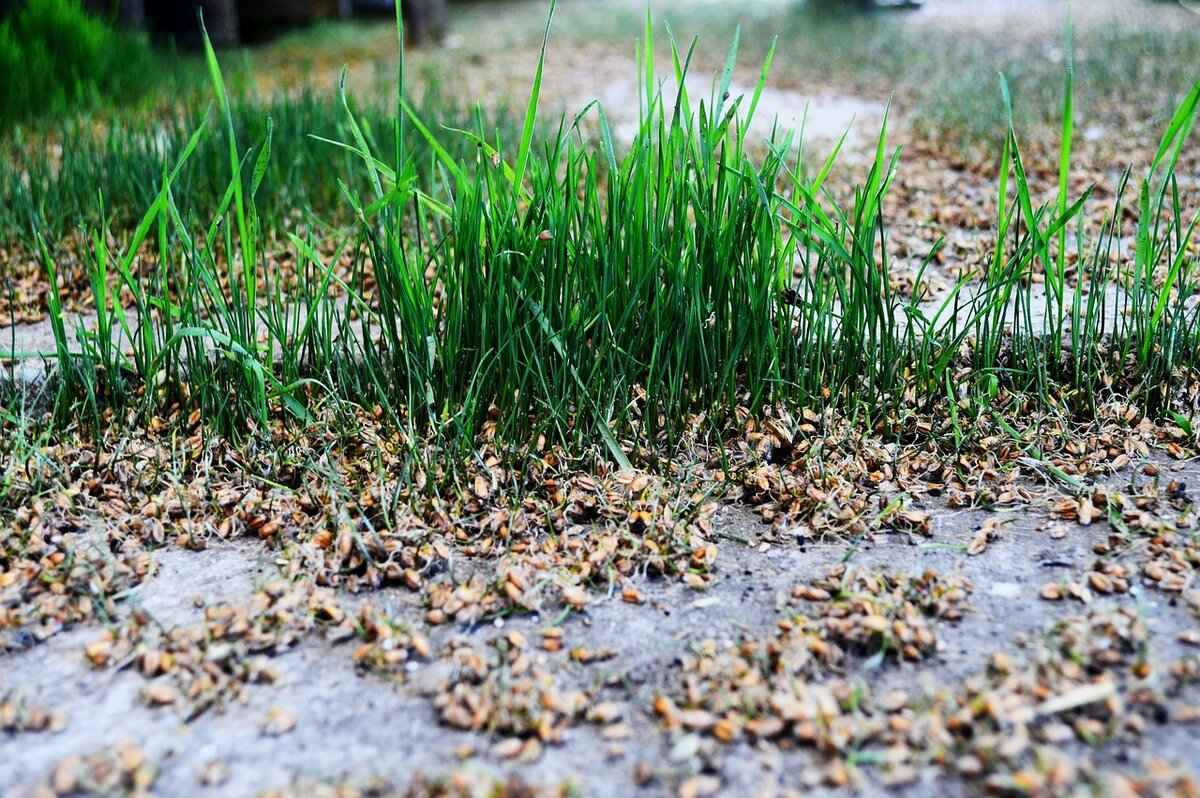
How to Serve and Store Chia Seed Pudding?
Chia seed pudding is not only a delicious and nutritious treat, but it also requires proper serving and storage to maintain its freshness and flavor. Understanding the best practices for serving and storing your chia seed pudding can enhance your culinary experience and ensure that you enjoy every spoonful. Below are some essential tips and insights to help you serve and store your chia seed pudding effectively.
When it comes to serving chia seed pudding, presentation can elevate the overall experience. Here are some creative serving ideas:
- Layered Parfaits: Create visually appealing parfaits by layering chia seed pudding with fresh fruits, granola, or nuts in a clear glass. This not only looks enticing but also adds texture and flavor.
- Individual Jars: Serve your pudding in small mason jars for a rustic touch. This makes for a perfect grab-and-go breakfast or snack.
- Garnish with Fresh Herbs: A sprinkle of mint or basil can add a refreshing twist to your pudding, enhancing both taste and presentation.
- Top with Edible Flowers: For a touch of elegance, consider garnishing your pudding with edible flowers, making it perfect for special occasions.
To ensure your chia seed pudding remains fresh and delicious, proper storage is crucial. Here are some effective storage tips:
- Refrigerate Immediately: After preparing your chia seed pudding, place it in an airtight container and refrigerate it right away. This helps to prevent spoilage and maintains its creamy texture.
- Use Glass Containers: Glass containers are preferable as they do not retain odors and are less likely to stain compared to plastic. They also provide a better seal, keeping your pudding fresh longer.
- Check for Freshness: Chia seed pudding can generally last up to 5 days in the refrigerator. Always check for any signs of spoilage, such as an off smell or unusual texture, before consuming.
- Portion Control: Consider making smaller batches if you’re unsure about how quickly you’ll consume the pudding. This allows you to enjoy fresh servings without waste.
Yes, you can freeze chia seed pudding! If you want to prepare it in advance, freezing is a great option. Here are some tips:
- Use Freezer-Safe Containers: Ensure that you use containers that are safe for freezing to avoid any damage. Leave some space at the top of the container as the pudding may expand when frozen.
- Thawing: To thaw, simply transfer the container to the refrigerator the night before you plan to eat it. Stir well before serving to restore the creamy texture.
By following these serving and storage tips, you can enjoy your chia seed pudding at its best. Whether you’re preparing it for breakfast, a snack, or dessert, maintaining freshness will ensure a delightful experience every time.
Creative Serving Suggestions
When it comes to serving chia seed pudding, the presentation can elevate the entire dining experience. Not only does a visually appealing dish entice the eyes, but it also enhances the anticipation of the flavors to come. Here are some that will make your chia seed pudding a delightful centerpiece for any meal.
- Layered Parfaits: Create a stunning visual by layering chia seed pudding with your favorite fruits, granola, and yogurt in a clear glass. This not only showcases the beautiful textures but also adds a variety of flavors in each spoonful.
- Mini Jars: Serve individual portions of chia seed pudding in small mason jars. This rustic presentation is perfect for gatherings, allowing guests to grab their own serving while adding a charming touch to your table.
- Fruit Bowls: Hollow out a large fruit, such as a pineapple or coconut, and fill it with chia seed pudding. This unique serving method not only looks stunning but also introduces an additional layer of flavor.
- Chocolate Cups: For a decadent twist, serve chia seed pudding in homemade chocolate cups. Melt dark chocolate, coat the insides of silicone molds, and let them set. Once firm, fill them with your pudding for a luxurious treat.
- Edible Spoons: Try serving chia seed pudding in edible spoons made from cookie dough or crackers. This fun and interactive approach allows guests to enjoy their pudding while munching on the spoon itself.
To enhance the experience further, consider adding toppings that not only taste great but also add visual appeal. Some popular options include:
- Fresh Berries: Strawberries, blueberries, and raspberries add a burst of color and a hint of sweetness.
- Chopped Nuts: Almonds, walnuts, or pistachios provide a satisfying crunch that contrasts beautifully with the creamy pudding.
- Shredded Coconut: A sprinkle of coconut can add a tropical flair and an extra layer of flavor.
- Drizzles of Honey or Maple Syrup: A touch of sweetness can elevate the overall taste and make the dish even more inviting.
Finally, don’t forget about thematic presentations based on the season or occasion. For instance, during the summer, you might opt for a beach-themed display with seashells and sand-like crushed graham crackers around your pudding. In contrast, a winter gathering could feature a cozy, warm presentation with cinnamon sticks and a sprinkle of nutmeg on top.
By incorporating these creative serving suggestions, you can transform your chia seed pudding into a show-stopping dish that delights both the eyes and the palate. Whether you’re hosting a brunch, a dinner party, or simply enjoying a treat at home, these ideas will ensure your chia seed pudding is not just a meal but an experience.
Storage Tips for Maximum Freshness
When it comes to enjoying your chia seed pudding, proper storage is essential to maintain its delightful taste and creamy texture. In this section, we will explore effective storage tips that can help you keep your pudding fresh for an extended period.
Chia seed pudding is not only a nutritious snack but also a versatile dish that can be customized with various flavors and toppings. However, improper storage can lead to a loss of flavor and texture, making it less enjoyable. Here are some tips to ensure your pudding stays fresh:
Using the right container is crucial for maintaining freshness. Opt for airtight containers that can prevent air exposure. Glass jars or plastic containers with tight seals work well. Avoid using containers that are too large, as excess air can spoil the pudding faster.
After preparing your chia seed pudding, make sure to refrigerate it immediately. Keeping it at a consistent, cool temperature helps to slow down bacterial growth and maintain its texture. Ideally, your pudding should be consumed within 3 to 5 days for the best quality.
If you plan to make a large batch, consider dividing it into smaller portions. This way, you only expose a portion to air and potential contaminants each time you serve. It also makes for a convenient grab-and-go snack!
If you want to keep your chia seed pudding for a longer period, consider freezing it. Pour the pudding into ice cube trays or freezer-safe containers, leaving some space for expansion. When you’re ready to eat, simply thaw the desired amount in the refrigerator overnight.
To maintain the texture and freshness of your pudding, store any toppings separately. Ingredients like fruits, nuts, or granola can become soggy if mixed in with the pudding. Add these toppings just before serving for the best experience.
Always check your pudding for signs of spoilage before consuming. If you notice any off smells, discoloration, or an unusual texture, it’s best to err on the side of caution and discard it. Fresh chia seed pudding should have a creamy consistency and a pleasant aroma.
By following these storage tips, you can ensure that your chia seed pudding remains fresh and delicious for longer. Proper storage not only enhances your culinary experience but also allows you to enjoy this nutritious treat at your convenience. Remember, a little attention to storage can go a long way in preserving the delightful qualities of your chia seed pudding!
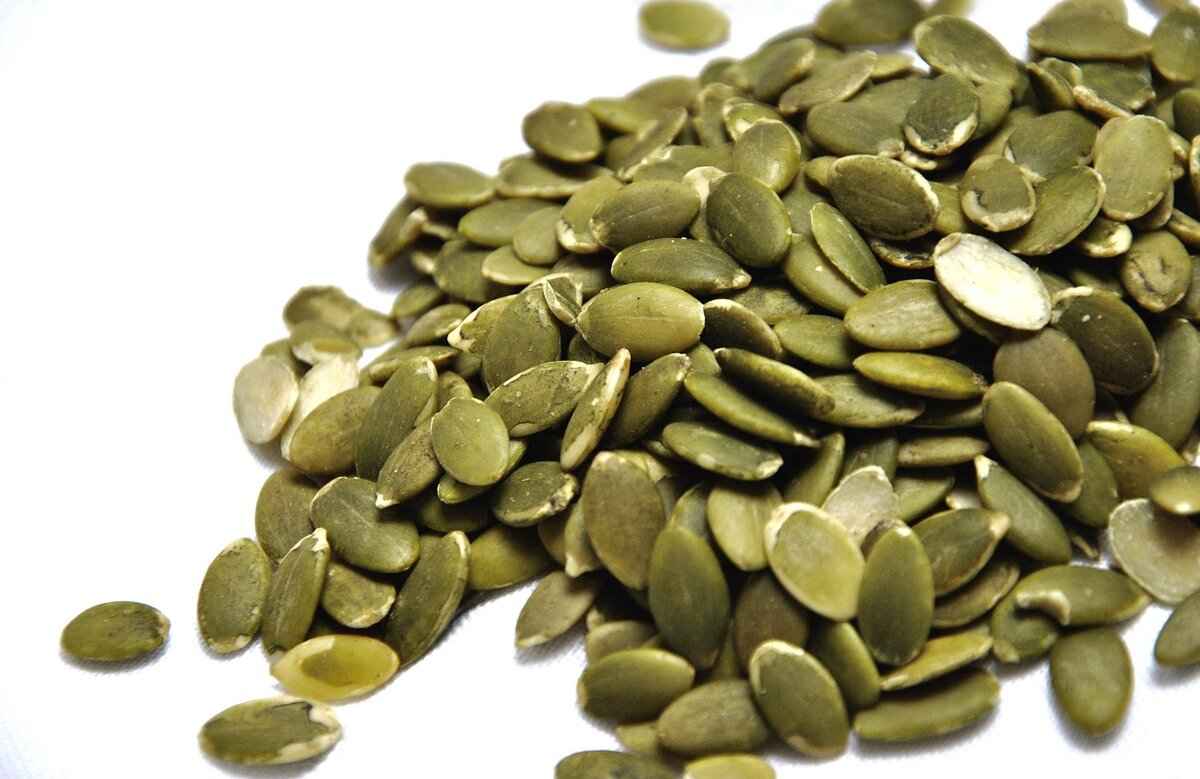
Are There Any Dietary Considerations with Chia Seeds?
Chia seeds have gained immense popularity due to their numerous health benefits and versatility in various dishes. However, while they are generally safe for most individuals, there are some dietary considerations to keep in mind before incorporating them into your meals.
Before adding chia seeds to your diet, it’s essential to understand that some people may have dietary restrictions or allergies. For instance, individuals with certain seed allergies may experience adverse reactions. Always consult with a healthcare provider if you have known allergies or sensitivities.
Although rare, some individuals may develop an allergic reaction to chia seeds. Symptoms can include itching, swelling, or difficulty breathing. If you suspect an allergy, it’s crucial to avoid chia seeds and seek medical advice. Always be cautious when introducing any new food into your diet, especially if you have a history of food allergies.
Chia seeds are a fantastic addition for those following a variety of dietary lifestyles. They are vegan, gluten-free, and can be easily incorporated into paleo and keto diets. Their high fiber content makes them a great choice for those looking to improve their digestive health.
While chia seeds are beneficial, consuming them in large quantities without adequate hydration can lead to digestive issues. These tiny seeds can absorb up to 12 times their weight in water, potentially causing discomfort if not consumed with sufficient liquid. It’s advisable to start with a small amount, such as one tablespoon, and gradually increase as your body adjusts.
Chia seeds may interact with certain medications, particularly those affecting blood sugar levels or blood pressure. If you are on medication, consult your healthcare provider to ensure that adding chia seeds to your diet won’t interfere with your treatment plan.
- Start Small: Begin with a small quantity and observe how your body reacts.
- Hydrate: Always soak chia seeds in water or your preferred liquid before consumption.
- Consult Professionals: If you have any health concerns, speak with a nutritionist or doctor.
Incorporating chia seeds into your diet can offer numerous health benefits, but it’s essential to be aware of any dietary restrictions or potential allergies. By understanding how to safely enjoy chia seeds, you can reap their nutritional rewards while minimizing any risks. Always prioritize your health and consult with professionals when in doubt.
Chia Seeds and Allergies
Chia seeds have gained popularity as a nutritious superfood, but it’s essential to be aware that some individuals may experience allergic reactions to them. Understanding the potential allergens associated with chia seeds and recognizing the signs of an allergy can help ensure safe consumption.
Chia seeds are generally considered safe for most people, but they can cause allergic reactions in some cases. The primary allergens in chia seeds include:
- Proteins: Certain proteins in chia seeds can trigger allergic responses in sensitive individuals.
- Cross-reactivity: Those with allergies to other seeds, such as sesame or flaxseed, may also react to chia seeds due to similar protein structures.
- Environmental Factors: Allergens from the environment, such as pollen, can also influence reactions in individuals consuming chia seeds.
Recognizing the symptoms of a chia seed allergy is crucial for prompt response and management. Common signs include:
- Skin Reactions: Hives, itching, or eczema can occur shortly after consuming chia seeds.
- Gastrointestinal Issues: Symptoms like nausea, vomiting, or diarrhea may arise as a reaction.
- Respiratory Problems: Some individuals may experience difficulty breathing, wheezing, or nasal congestion.
If you suspect a chia seed allergy, it is vital to consult a healthcare professional for proper diagnosis and management.
If you experience symptoms after consuming chia seeds, your doctor may recommend allergy testing. This could include:
- Skin Prick Tests: These tests involve placing a small amount of allergen on your skin to observe reactions.
- Blood Tests: These tests can measure your immune system’s response to specific allergens.
For individuals diagnosed with a chia seed allergy, the most effective management strategy is to avoid chia seeds and products containing them. Here are some tips for safe consumption:
- Read Labels: Always check ingredient lists on food products to ensure they do not contain chia seeds.
- Communicate: Inform restaurants and food manufacturers about your allergy to prevent accidental exposure.
- Carry Medication: If prescribed, carry an epinephrine auto-injector for severe allergic reactions.
If you are allergic to chia seeds, there are several alternatives you can consider:
- Flaxseeds: These seeds are similar in texture and can be used in various recipes.
- Hemp Seeds: Rich in omega-3 fatty acids, hemp seeds offer a nutritious alternative.
- Sunflower Seeds: These seeds can provide a different flavor profile while being allergen-friendly.
In conclusion, while chia seeds are a healthy addition to many diets, it’s crucial to be aware of potential allergies. By understanding the allergens, recognizing symptoms, and knowing how to manage allergies, you can enjoy a safe and nutritious eating experience.
Chia Seeds in Special Diets
Chia seeds have gained immense popularity in recent years, not only for their nutritional benefits but also for their versatility in various dietary lifestyles. These tiny seeds are a fantastic addition to many diets, including vegan, gluten-free, and even paleo. In this section, we will explore how chia seeds fit into different dietary restrictions and how they can enhance your meals.
Chia seeds are derived from the Salvia hispanica plant and are entirely plant-based. This makes them an excellent source of protein, omega-3 fatty acids, and fiber for those following a vegan diet. Unlike some other protein sources, chia seeds do not involve animal products, making them a perfect fit for vegans looking to boost their nutrient intake.
For individuals with gluten intolerance or celiac disease, chia seeds offer a safe and nutritious alternative. They are naturally free from gluten, making them an ideal ingredient for gluten-free recipes. Chia seeds can be used as a thickening agent in smoothies, soups, and sauces, providing both texture and nutritional value without the risk of gluten contamination.
Incorporating chia seeds into your diet can be beneficial for weight management. Their high fiber content helps promote a feeling of fullness, which can reduce overall calorie intake. Additionally, when chia seeds are soaked in liquid, they expand and form a gel-like consistency, making them a satisfying addition to meals and snacks.
While the paleo diet focuses on whole foods that our ancestors would have consumed, chia seeds are often included due to their nutrient density. They provide essential fatty acids and protein, making them a valuable addition to paleo-friendly smoothies and snacks. However, it’s essential for individuals following a strict paleo regimen to consider their personal guidelines regarding seed consumption.
- Vegan Smoothies: Blend chia seeds into your favorite fruit smoothies for an added nutrient boost.
- Gluten-Free Baking: Use chia seeds as an egg substitute in gluten-free baking by mixing them with water to create a gel.
- Paleo Puddings: Combine chia seeds with coconut milk and natural sweeteners for a delicious paleo pudding.
While chia seeds are safe for most individuals, it’s important to be aware of potential allergies. Some people may experience allergic reactions to chia seeds, presenting as skin rashes or digestive discomfort. If you are trying chia seeds for the first time, start with a small amount to monitor your body’s response.
Chia seeds are a versatile food that can easily fit into many dietary lifestyles. Whether you’re vegan, gluten-free, or following a paleo diet, these tiny seeds can enhance your meals with their nutritional benefits. By incorporating chia seeds into your diet, you can enjoy delicious and healthy meals while meeting your dietary needs.
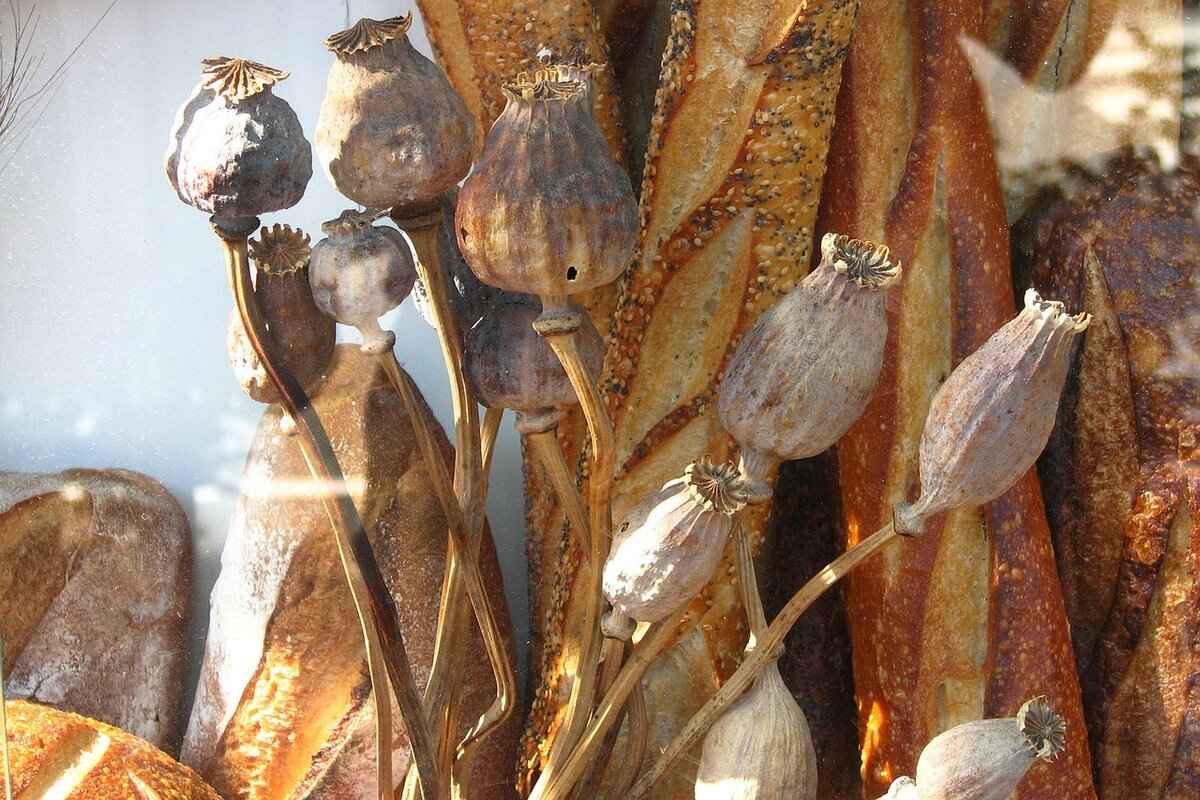
FAQs About Chia Seed Pudding
When it comes to chia seed pudding, many enthusiasts have questions that can enhance their culinary journey. This section aims to address the most common inquiries, providing you with insights and guidance to make the most of your chia seed pudding experience. Whether you’re a beginner or a seasoned pro, understanding these aspects can help you create delicious and nutritious puddings.
One of the most frequently asked questions is about the shelf life of chia seed pudding. Typically, when stored in an airtight container in the refrigerator, chia seed pudding can last for about 5 to 7 days. To ensure maximum freshness, it is essential to keep it refrigerated and avoid introducing contaminants. If you notice any off smells or changes in texture, it’s best to discard it.
Many people wonder if chia seeds can be consumed raw. The good news is that yes, you can eat chia seeds in their unsoaked form. However, soaking them in liquid before consumption is recommended because it enhances their digestibility and allows them to expand, providing a satisfying texture. Raw chia seeds are safe to eat, but they may absorb water from your body, potentially leading to dehydration if consumed in large quantities without adequate hydration.
Choosing the right liquid is crucial for achieving the desired flavor and consistency in your chia seed pudding. Some popular options include:
- Almond Milk: A nutty flavor that pairs well with various sweeteners.
- Coconut Milk: Adds a rich, creamy texture and tropical taste.
- Oat Milk: A great choice for a naturally sweet and creamy base.
- Fruit Juices: Such as orange or apple juice, for a refreshing twist.
Absolutely! Sweetening your chia seed pudding can enhance its flavor significantly. Popular natural sweeteners include:
- Honey: Adds a floral sweetness.
- Maple Syrup: A rich and earthy flavor.
- Agave Nectar: A vegan-friendly option.
- Stevia: A calorie-free alternative for those watching their sugar intake.
Texture is a key component of enjoying chia seed pudding. To achieve the perfect consistency, follow these tips:
- Use the right ratio of chia seeds to liquid, typically 1:4.
- Stir the mixture well after adding chia seeds to prevent clumping.
- Allow the pudding to sit in the refrigerator for at least 2 hours, or overnight for best results.
Chia seeds are packed with nutrients, but it’s essential to consider individual dietary needs. They are high in fiber, which can aid digestion, but consuming too much without adequate hydration can lead to digestive discomfort. Additionally, individuals with allergies or specific dietary restrictions should consult with a healthcare provider before incorporating chia seeds into their diet.
By addressing these common questions, you can feel more confident in your ability to create delicious and nutritious chia seed pudding. With the right knowledge and a bit of creativity, your chia seed pudding journey can be both enjoyable and rewarding.
How Long Does Chia Seed Pudding Last?
Understanding the shelf life of chia seed pudding is essential for effective meal planning and ensuring food safety. Chia seed pudding, a popular health food, is made by soaking chia seeds in liquid, which creates a creamy and nutritious dish. However, knowing how long you can safely store your pudding in the fridge is crucial for maintaining its quality and flavor.
Typically, chia seed pudding can last up to 5 days in the refrigerator when stored properly. However, several factors can influence its shelf life, including the ingredients used and how it is stored.
- Ingredients: The type of liquid and additional ingredients like fruits or sweeteners can affect how long your pudding stays fresh. For example, adding fresh fruits may shorten the shelf life.
- Storage Conditions: Proper storage in an airtight container is essential. Exposure to air can lead to spoilage and off-flavors.
- Hygiene: Clean utensils and containers will help prevent contamination, which can also affect freshness.
To maximize the shelf life of your chia seed pudding, follow these storage tips:
- Use Airtight Containers: Always store your pudding in a clean, airtight container to keep out moisture and bacteria.
- Refrigerate Promptly: After preparing your pudding, refrigerate it immediately to slow down bacterial growth.
- Label and Date: If you make multiple batches, label each container with the date it was made to keep track of freshness.
It’s important to recognize the signs of spoiled chia seed pudding:
- Off Smell: If your pudding has a sour or unusual smell, it’s best to discard it.
- Change in Texture: If the pudding becomes excessively watery or develops a strange texture, it may no longer be safe to eat.
- Mold Growth: Any visible mold is a clear indication that the pudding should be thrown away.
Yes, you can freeze chia seed pudding to extend its shelf life. When freezing, use freezer-safe containers and leave some space for expansion. The pudding can last for up to 3 months in the freezer. However, be aware that the texture may change slightly upon thawing.
In summary, understanding the shelf life of chia seed pudding is crucial for meal planning and food safety. By following proper storage techniques and being aware of spoilage signs, you can enjoy this nutritious treat without any concerns. Remember to keep track of how long your pudding has been stored, and don’t hesitate to freeze it for longer storage options.
Can You Eat Chia Seeds Raw?
Chia seeds have gained popularity as a superfood due to their impressive nutritional profile. Many health enthusiasts often ask, “Can you eat chia seeds raw?” This article explores the safety, nutritional benefits, and considerations of consuming chia seeds in their unsoaked form.
Chia seeds are tiny black or white seeds derived from the Salvia hispanica plant, native to Mexico and Guatemala. They are known for their rich content of omega-3 fatty acids, dietary fiber, protein, and essential minerals like calcium and magnesium. These nutrients contribute to various health benefits, including improved heart health, digestive support, and enhanced energy levels.
- High in Fiber: Raw chia seeds are an excellent source of dietary fiber, which aids in digestion and promotes a feeling of fullness.
- Rich in Antioxidants: They contain antioxidants that help combat oxidative stress and inflammation in the body.
- Protein Source: Chia seeds offer a plant-based protein option, making them a great addition to vegetarian and vegan diets.
- Omega-3 Fatty Acids: These essential fats are crucial for brain health and cardiovascular function.
While eating chia seeds raw is generally safe for most people, there are a few important considerations:
- Hydration: Chia seeds can absorb up to 12 times their weight in water. Consuming them dry without adequate hydration may lead to digestive discomfort.
- Allergies: Although rare, some individuals may have allergies to chia seeds. It’s essential to monitor for any adverse reactions when introducing them into your diet.
- Portion Control: Due to their high fiber content, it’s advisable to start with small amounts, gradually increasing as your body adjusts.
If you’re considering adding raw chia seeds to your diet, here are some practical ideas:
- Sprinkle on Salads: Add a tablespoon of raw chia seeds to your salads for an extra crunch and nutritional boost.
- Blend into Smoothies: Incorporate them into your smoothies for added texture and nutrients.
- Mix with Yogurt: Stir raw chia seeds into yogurt or oatmeal for enhanced flavor and health benefits.
In conclusion, chia seeds can be consumed raw and offer numerous health benefits. However, it’s crucial to be mindful of hydration and portion sizes. By incorporating them thoughtfully into your diet, you can enjoy their nutritional advantages while minimizing any potential risks. Always consult with a healthcare provider if you have specific health concerns or dietary restrictions.
Frequently Asked Questions
- How Long Does Chia Seed Pudding Last?
Chia seed pudding can last up to 5 days in the fridge when stored properly in an airtight container. Always check for any off smells or changes in texture before consuming!
- Can You Eat Chia Seeds Raw?
Absolutely! Chia seeds can be eaten raw, but soaking them in liquid enhances their nutritional benefits and makes them easier to digest. Think of them as little sponges that expand and soak up goodness!
- Are Chia Seeds Safe for Everyone?
While chia seeds are generally safe, some individuals may experience allergies. If you’re unsure, start with a small amount to see how your body reacts. Always consult with a healthcare professional if you have concerns!
- Can I Use Any Liquid for Chia Seed Pudding?
Yes! You can use a variety of liquids like almond milk, coconut milk, or even fruit juices. The choice of liquid will affect the flavor and texture, so feel free to experiment!
- How Do I Achieve the Perfect Texture?
The key to a creamy chia seed pudding is the right ratio of chia seeds to liquid. A good starting point is 1/4 cup of chia seeds to 1 cup of liquid. Stir well and let it sit for at least 2 hours or overnight for the best results!


